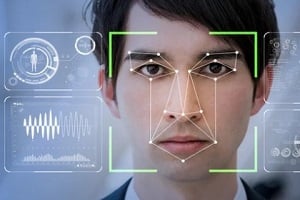Technology is evolving at a rapid speed and the resourcefulness of criminals along with it. To fight back against crime in a digital world, law enforcement must adopt new tools and equipment that keep pace with technological advancements.
The use of cutting-edge tracking systems, software and other technologies has made a significant difference in the criminal justice industry, helping to catch criminals, enhance public safety and ultimately save lives. Learn more about how technology is currently being used in criminal investigations.
Expansive Databases
Data plays a key role in the successful resolution of criminal investigations. It is estimated that more than 2.5 quintillion bytes of data are generated across the planet each day.
Law enforcement officials use data for a variety of reasons, such as to obtain evidence and identify crime trends. Fingerprints, DNA, background information and other data are stored in expansive databases that law enforcement officials can access to help them in their criminal investigations.
Facial Recognition Software
 One of the most recent technological advances to hit the criminal justice industry is facial recognition software. Facial recognition technology is capable of matching human faces from video frames or digital images against a database of faces.
One of the most recent technological advances to hit the criminal justice industry is facial recognition software. Facial recognition technology is capable of matching human faces from video frames or digital images against a database of faces.
This technology acts as a quick and efficient verification system that is more convenient than other technologies, such as retina and fingerprint scans. Facial recognition also requires fewer touchpoints compared to entering pins or passwords.
Rapid Identification Systems
The increased use of databases has also resulted in the development of rapid identification systems. These systems are designed to allow law enforcement officers to quickly access the criminal history of individuals using basic search functions. This means that individuals who are pulled over can be instantly identified through an in-car computer search, even if they do not have a license.
Next-generation identification systems use biometrics to aid in criminal investigations. Palm prints, fingerprints, facial recognition, iris recognition and other tools are used to match individuals with their criminal backgrounds. These technologies are always being updated and improved to provide officers with the most comprehensive and up-to-date information.
Voice Command Technology
Law enforcement officers spend the majority of their time out of the office and on the road. While officers have access to a variety of useful research and communication methods, these tools cannot be safely used while driving. Voice command technology enables officers to control various tools and functions while driving and performing other patrol duties.
The capabilities of voice command technologies can vary from vehicle to vehicle; however, most are capable of turning on a police siren or running a license plate hands-free. More sophisticated technologies allow law enforcement agencies to record information to simplify the filing process. Officers are able to dictate their notes which are then automatically recorded in the agency’s records management system (RMS).
Cell Phones
Law enforcement now has an array of opportunities to help their criminal investigations through cell phone use. A suspect’s cell phone conversations and text messages can be intercepted using a wiretap without the suspect’s knowledge. Law enforcement can also physically track and monitor a suspect’s location using their phone.
Mobile cell phone providers are responsible for storing and maintaining records of which towers the phone uses when turned on. Law enforcement can gain access to a person’s historical phone records from the cell phone provider. The cell user does not even need to be making a call or sending a text message for towers to record these activities.
Monitoring Systems
 Modern law enforcement officers use a variety of equipment to aid in investigations, including global positioning systems (GPS) which allows officers to more easily locate criminals and get to crime scenes. Drones are also commonly used in law enforcement, giving officers an aerial view of a scene enabling them to safely observe the area from a distance.
Modern law enforcement officers use a variety of equipment to aid in investigations, including global positioning systems (GPS) which allows officers to more easily locate criminals and get to crime scenes. Drones are also commonly used in law enforcement, giving officers an aerial view of a scene enabling them to safely observe the area from a distance.
Other monitoring systems used by law enforcement include license plate scanning. This technology allows officers to determine if a vehicle has been stolen or if there is a warrant out for the driver’s arrest. Other commonly used monitoring systems in the criminal justice industry include gunshot technology and surveillance cameras.
Schedule a Consultation
Law enforcement officers rely heavily on technology to make progress in their criminal investigations. CPI OpenFox has revolutionized the industry by delivering innovative software and data-sharing solutions exclusively for law enforcement professionals. These reliable, secure and optimized law enforcement systems are designed for both local and state law enforcement departments in the U.S.
CPI OpenFox offers high-level software consisting of enterprise-grade programs that work seamlessly to streamline workflows and optimize processes. These systems are fully encrypted for advanced security, as well as scalable. OpenFox software solutions are designed with customer needs in mind to ensure dynamic and user-friendly applications. To learn more about the OpenFox suite of software, schedule a consultation with CPI OpenFox online or call (630) 547-3088 to get started.


